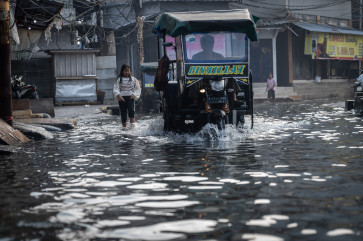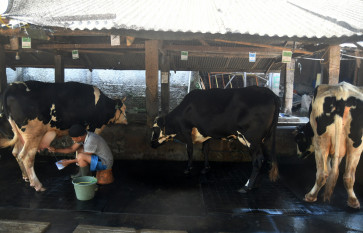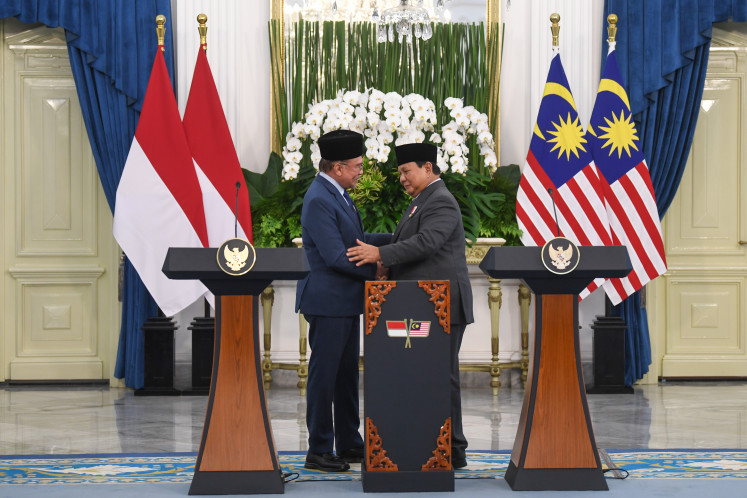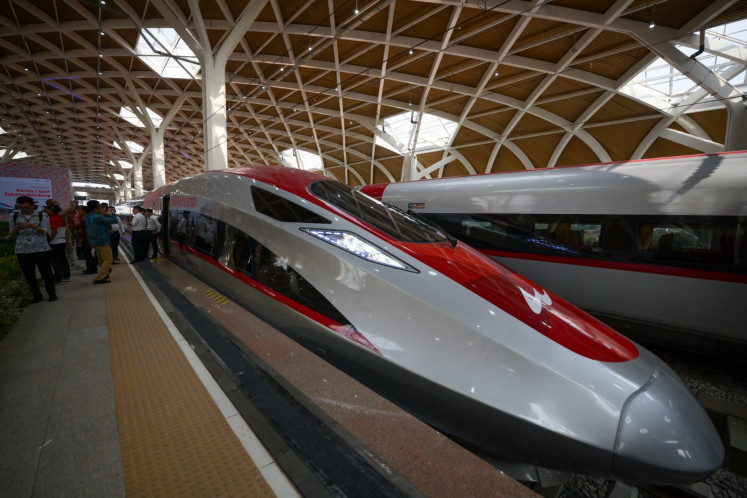Popular Reads
Top Results
Can't find what you're looking for?
View all search resultsPopular Reads
Top Results
Can't find what you're looking for?
View all search resultsNew international port in West Kalimantan to boost industrial activities
Industry players in West Kalimantan are set to enjoy faster shipping following the launch of the construction of Kijing International Port, which will be operated to international standards and utilize a digital-based system
Change text size
Gift Premium Articles
to Anyone

I
ndustry players in West Kalimantan are set to enjoy faster shipping following the launch of the construction of Kijing International Port, which will be operated to international standards and utilize a digital-based system.
State-owned port operator Pelindo II, also known as the Indonesia Port Corporations (IPC), will spend Rp 5.7 trillion (US$415.2 million) to build the 200-hectare port located in Kijing Beach, Mempawah regency, West Kalimantan.
The IPC has long had plans to build Kijing Port because of the growing urban and business activities in Pontianak, the capital of West Kalimantan, and other surrounding provinces, with its existing Pontianak Port already operating at full capacity.
The future Kijing Port, which is located around 80 kilometers from Pontianak, will also be integrated with a 5,000 ha-special economic zone (SEZ) in an effort to build a source of economic growth in the region.
Acting Mempawah Regent Gusti Ramlana said West Kalimantan had many commodities in need of downstream processing, such as plantation-based and mining products, but that the province had yet to have a port specifically designed to cater to that area.
“I hope at least 50 companies will build factories in the SEZ, which will later be integrated with the port, so that many workers will be absorbed and its economic impact will hopefully spread,” he said recently. “This [port] will become a new economic nerve center of this region.”
IPC president director Elvyn G. Masassya said there were already a number of state and private-owned companies that had offered to cooperate in the SEZ development. The Kijing Port itself, he said, would become the largest port in Kalimantan and help strengthen inter-island connectivity.
IPC corporate secretary Shanti Puruhita said the Kijing Port location faced Singapore and was close to Malaysia along an old shipping lane, adding that it would “support the government’s Maritime Highway policy”.
Another reason to build the Kijing Port was because the Kapuas River, the site of Pontianak Port, suffered from heavy sedimentation that needed to be dredged annually at a cost of Rp 70 billion and was also located in the inland city of Pontianak, Shanti said.
As the seaport was sandwiched between the Kapuas River and a crowded residential area, it was unlikely the port could be expanded, said Pelindo II Pontianak general manager Adi Sugiri.
However, the IPC is still in the process of acquiring several hectares of land in order to complete the Kijing Port project.
The company had only acquired about 70 ha from the total 200-ha of land required for the construction, but it would gradually complete the acquisition process while working on the first phase of the project, said IPC technical and risk management director Dani Rusli Utama.
Alexander Rambonang, first assistant of the West Kalimantan province, expected that people around the Kijing Port construction area would be willing to sell their land to support the port development, which is one of the government’s national strategic projects.
“This port is a common need for many people,” he said.
Elvyn of IPC said the Kijing Port would be built gradually over four phases before beginning operations in the third quarter of 2019. For the first phase, which is expected to be completed within 18 months, the company will construct four terminals to serve containers, dry and liquid bulk.
The capacity of the container terminal is projected to be 1 million foot equivalent units (TEUs) annually. Meanwhile, liquid and dry bulk terminals will have a capacity of 8.3 million tons and 15 million tons, respectively.









